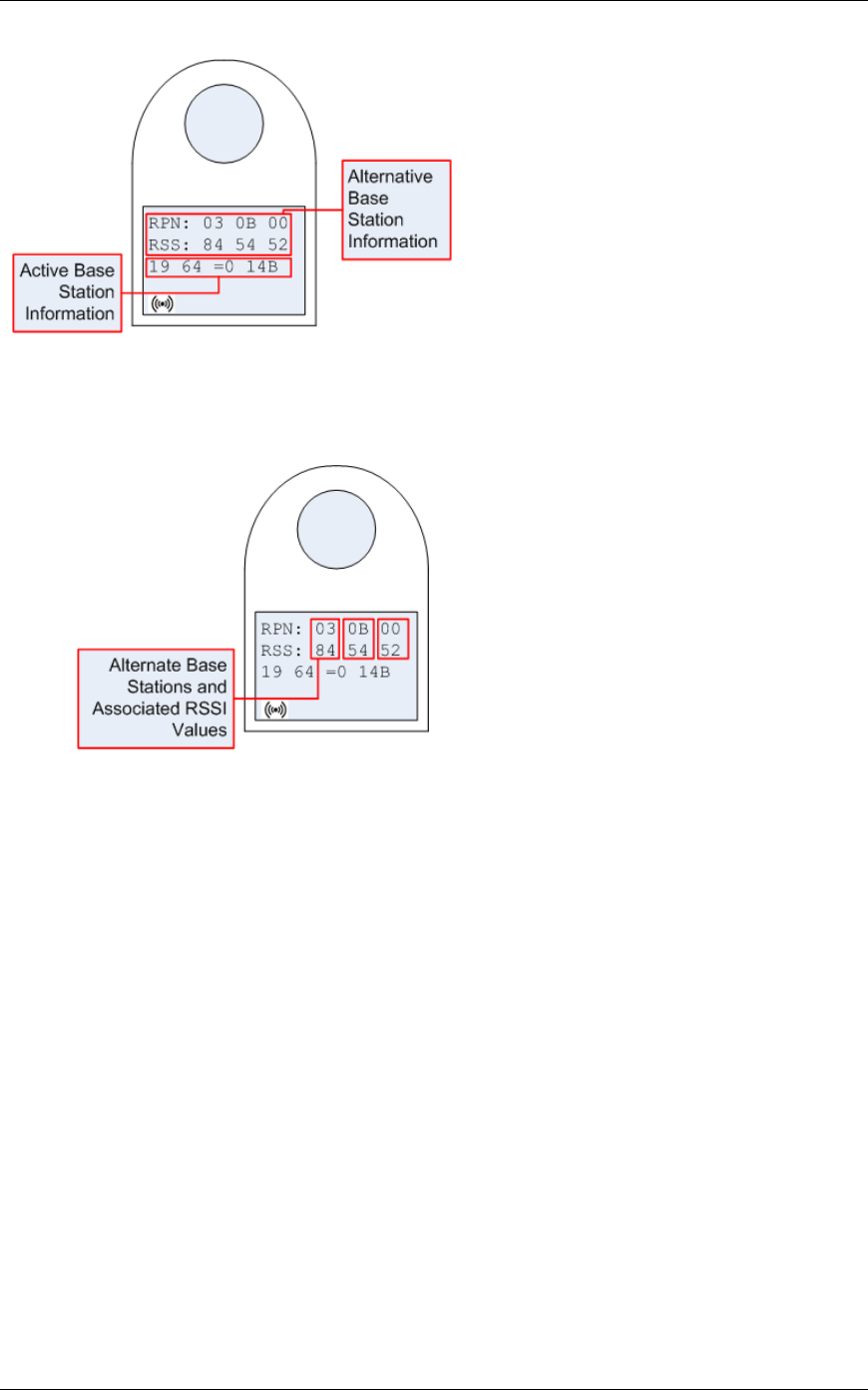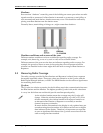
KIRK Wireless Server 1500 Installation and Maintenance
72160400_issue_B 18
Along the bottom row of the display, the
values for the closest Base Station or
Repeater are reported. From left to right in
the display, the information includes the
number of the Base Station or Repeater, the
Q-value, and the RSSI value. The remaining
numbers are not of value to the
measurement process. Should the handset
be taken off-hook in this location, this is t
Base Station or Repeater that would most
likely be activated. This is referred to as the
“active” Base Station.
he
Each Base Station and Repeater within range of the handset is listed to the right of RPN
(Radio fixed Part Number), with its corresponding RSSI value below it, to the right of
RSS. Alternate Base Stations and Repeaters are prioritized by RSSI value.
In this example, the handset is actively
synchronized to Base Station 25 (Hex value
19) with a Q-value of 64. The handset is
also within range of Base Station 03 with
RSSI value of 84. When the Q-value of Base
Station 25 drops to around 52, the handset
will request a handoff to the Base
Station/Repeater with the highest RSSI
value, if available. In this case, the handoff
would be given to Base Station 03 with RSSI
value of 84.
Site Survey Technique
Starting near the KWS1500, use your KIRK Handset to place an active call to another
telephone to monitor voice quality. Walk away from the KWS1500 while monitoring
signal values to find the limits of the coverage. Roam to each room or area of the facility
where coverage is desired.
Monitor the Q-value while moving away form the KWS1500. If the Q-value drops to 52
or becomes unstable (fluctuating) the limit of the radio coverage has been reached. Walk
back to an area where the Q-value stably measures at least 60, and the signal loss is not
higher than 25dB, and mark the location to install a KIRK Repeater.
During measurement of radio coverage, it is important to simulate the influence of the
human body and normal usage of the handset. This can be done either by shielding the
antenna by the hand, or by turning the handset and the body in a way to achieve a
“worst case” situation for reception of the radio signal from the Base Station.


















